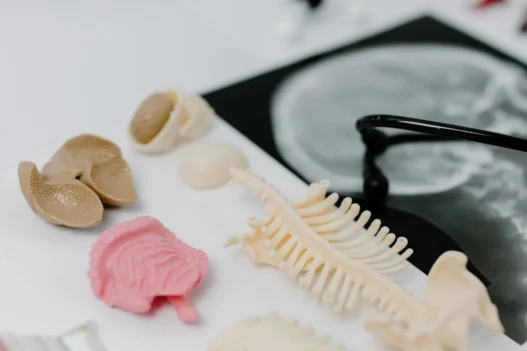0SSL3ZZ is a medical procedure that involves repositioning the left tarsometatarsal joint using a minimally invasive approach. This method allows for precise adjustment of the joint alignment without the need for more invasive surgery.
Table of Contents:
- 🔎 Clinical Indication
- 📋 Preparation
- 📖 Methodology
- 🩹 Recovery
- 🚨 Complexity & Risk
- 🔀 Similar Procedures
🔎 Clinical Indication
A reposition of the left tarsometatarsal joint may be performed through a percutaneous approach to realign any dislocations or fractures in the joint. This procedure can help alleviate pain, restore proper function, and prevent long-term issues with mobility in the foot. It is typically recommended when conservative treatments have proven ineffective in addressing the underlying problem.
📋 Preparation
Before undergoing a procedure to reposition the left tarsometatarsal joint through a percutaneous approach, your healthcare provider will give you instructions on how to prepare.
These instructions may include abstaining from food and drink for a certain period of time before the procedure, as well as informing you about any necessary medications you may need to take or avoid.
It is crucial to follow all pre-operative instructions provided by your healthcare team to ensure the success of the procedure and reduce the risk of complications.
📖 Methodology
During a 0SSL3ZZ procedure, the surgeon repositions the left tarsometatarsal joint using a percutaneous approach. This means that small incisions are made near the joint to allow instruments to be inserted for precise manipulation of the bones.
The goal of this procedure is to realign the bones in the foot to improve stability and reduce pain. By repositioning the tarsometatarsal joint, the surgeon aims to restore proper function and alignment in the foot, helping the patient to walk and move more comfortably.
🩹 Recovery
After undergoing a reposition of the left tarsometatarsal joint, patients can typically expect a recovery period of several weeks. During this time, they are advised to rest the affected foot, elevate it to reduce swelling, and apply ice packs as needed for pain management.
Physical therapy may be recommended to help strengthen the muscles surrounding the joint and improve flexibility. Patients may also be instructed to wear a supportive brace or shoe to provide added stability during the healing process. It is important for individuals to follow their healthcare provider’s post-operative instructions and attend follow-up appointments to monitor progress and address any concerns.
🚨 Complexity & Risk
Performing a 0SSL3ZZ procedure involves repositioning the left tarsometatarsal joint using a percutaneous approach. This procedure is complex as it requires precision and skill to manipulate the joint without causing damage to surrounding tissues.
One potential risk to patients undergoing this procedure is nerve or blood vessel damage. Due to the proximity of these structures to the joint, an error in repositioning could lead to nerve injury or compromised blood flow, resulting in pain or circulation issues for the patient.
🔀 Similar Procedures
Another medical procedure similar to 0SSL3ZZ is the Reposition Right Tarsometatarsal Joint, Percutaneous Approach. This procedure also involves repositioning the joint between the tarsal and metatarsal bones in the foot through a minimally invasive approach. It is often used to correct deformities or injuries in the joint, providing relief from pain and improving overall function of the foot.

